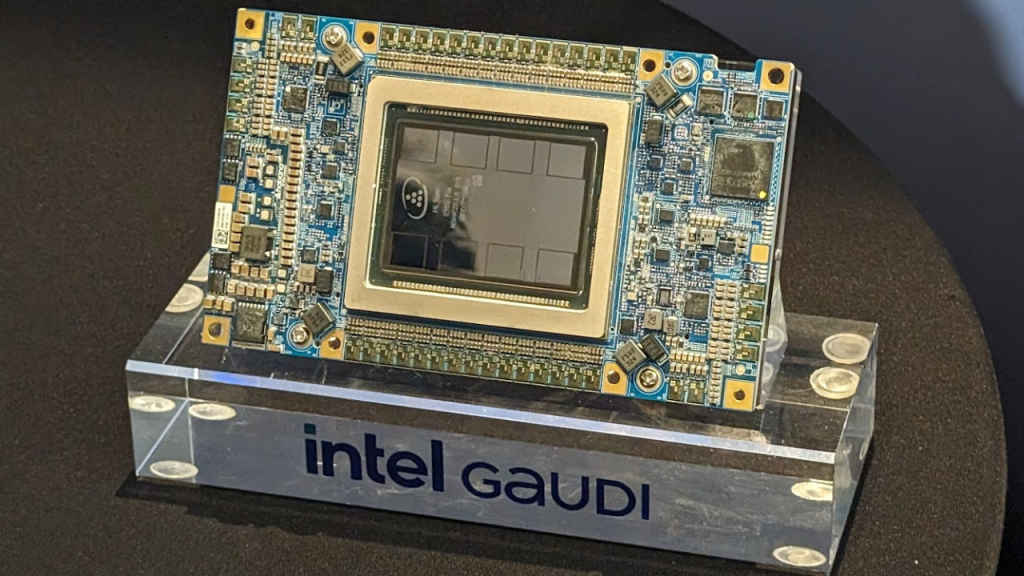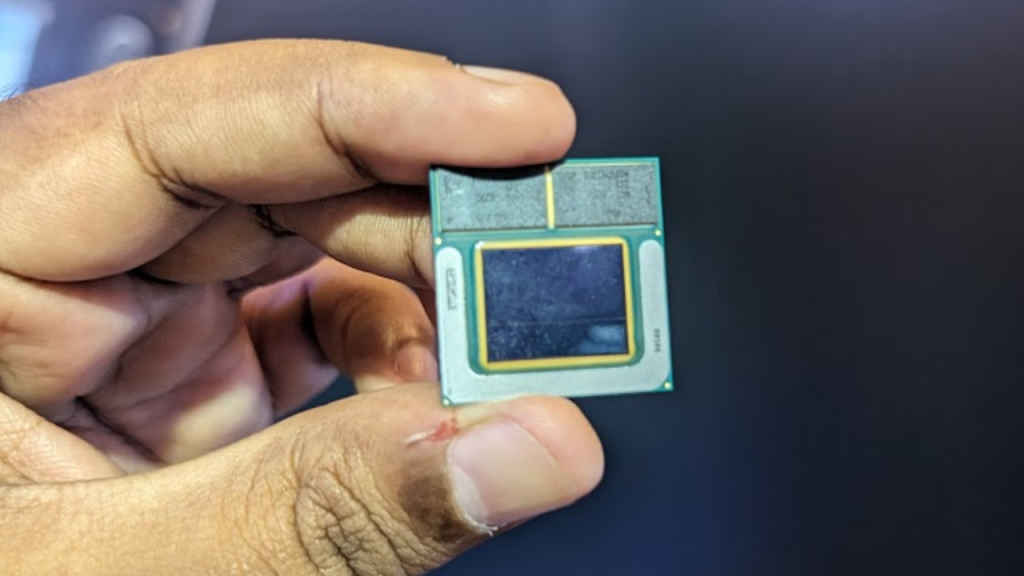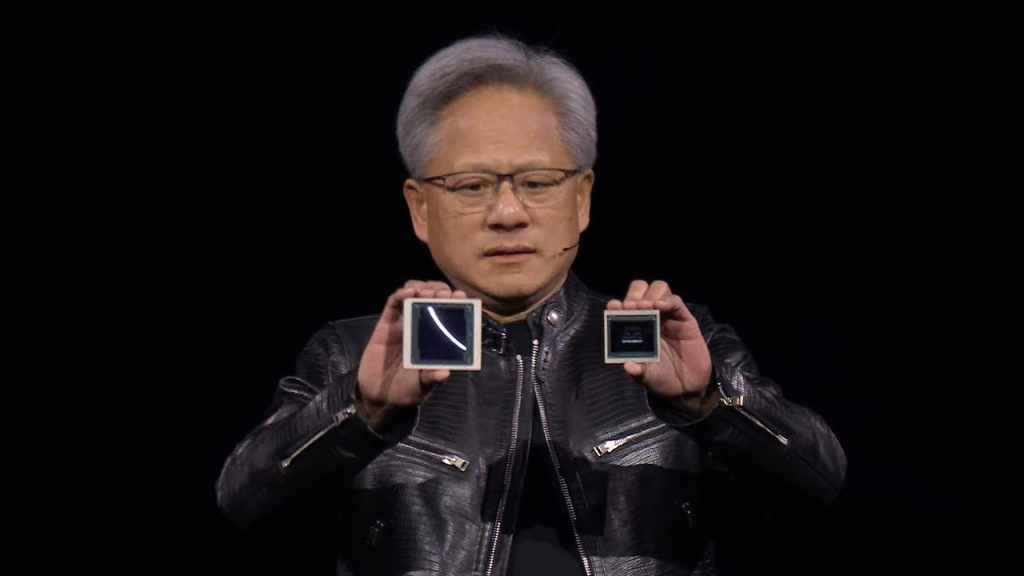Computex 2024: Intel CEO Pat Gelsinger outlines AI leadership, despite stiff competition

In the high-stakes arena of AI, Intel’s recent announcements at Computex 2024 were nothing short of a statistical tour de force. With a barrage of figures that underscore its dominance across the AI spectrum—from data centers and the cloud to edge devices and PCs—Intel’s numbers tell a compelling story of innovation, efficiency, and strategic foresight.
 Survey
SurveyXeon 6 Processors to drive AI data center efficiency
Intel’s new Xeon 6 processors are set to revolutionize high-density, scale-out workloads in the data center. With Efficient-cores (E-cores) leading the charge, these processors deliver up to a 4.2x increase in rack-level performance and a 2.6x improvement in performance per watt compared to their predecessors. For enterprises looking to consolidate, the Xeon 6’s ability to enable 3:1 rack consolidation is a game-changer, translating to significant savings in energy and physical space.

Gaudi AI Accelerators: For cost-effective AI performance
Intel’s Gaudi AI accelerators further strengthen its AI portfolio. The Gaudi 2 and Gaudi 3 kits offer up to one-third and two-thirds lower costs respectively compared to competitive platforms. A standard AI kit with eight Gaudi 2 accelerators is priced at $65,000, while the Gaudi 3 kit lists at $125,000. Performance-wise, the Gaudi 3 in an 8,192-accelerator cluster is projected to achieve up to 40% faster time-to-train versus the equivalent Nvidia H100 GPU cluster. For a 64-accelerator cluster, Gaudi 3 promises up to 15% faster training throughput on the Llama2-70B model, with an average of up to 2x faster inferencing on popular LLMs.
Lunar Lake: Next generation of AI PCs
Intel’s Lunar Lake architecture, aimed at the next generation of AI PCs, is another beacon of innovation. Promising up to 40% lower system-on-chip (SoC) power consumption compared to the previous generation, Lunar Lake sets a new benchmark in power efficiency. The fourth-generation Intel NPU within Lunar Lake delivers up to 48 TOPS, quadrupling the AI compute power of its predecessor. The Xe2 GPU cores offer a 1.5x improvement in gaming and graphics performance, and the new Xe Matrix Extension (XMX) arrays deliver up to 67 TOPS for AI content creation.
Market penetration and ecosystem support
Intel’s strategic partnerships and ecosystem support are critical to its AI leadership. More than 100 independent software vendors (ISVs) and support for 500 AI models across the Core Ultra platform highlight Intel’s expansive reach. The company’s edge deployments exceed 90,000, with over 200 million CPUs delivered to the ecosystem, showcasing its formidable presence in the market.

Pat Gelsinger, Intel’s CEO, encapsulates the company’s vision succinctly: “The magic of silicon is once again enabling exponential advancements in computing.” This vision is supported by Intel’s diverse portfolio spanning semiconductor manufacturing, PC, network, edge, and data center systems. The recent launch of the 5th Gen Intel Xeon processors and the introduction of the Xeon 6 family within a span of six months highlight Intel’s accelerated execution and commitment to staying ahead of the curve.
As AI PCs are projected to comprise almost 60% of new PCs by 2027, Intel is well-positioned to lead this transformation. The company’s goal of deploying more than 40 million Core Ultra processors in the market this year underlines its ambition to make AI PCs mainstream. With 80 different AI PC designs from 20 OEMs set to hit the market, Intel is not just talking about the future of AI—it’s actively building it.
Intel’s competition is manifold
In the AI landscape, Intel faces stiff competition from companies like AMD, NVIDIA, and Qualcomm, each with unique strengths. AMD unveiled its next-generation Ryzen 9000 series processors at Computex, boasting Zen 5 architecture that promises a 16% IPC (instructions per clock) lift over previous generations. This focus on raw performance threatens Intel’s dominance, especially considering AMD’s competitive pricing strategy. Additionally, AMD’s Ryzen AI 300 series processors, featuring a 50 TOPS NPU and RDNA 3.5 graphics, directly target Microsoft’s CoPilot+ initiative, a potential challenge to Intel’s hold on the enterprise AI market.

NVIDIA, the powerhouse in AI hardware, continues to push boundaries. While they haven’t announced a new flagship GPU at Computex 2024, their existing H100 GPU remains a formidable competitor to Intel’s Gaudi 3 in data center AI training and inference. However, Intel’s recent commitment to extending its AM5 platform through 2027 could create a longer upgrade window for AMD users, potentially swaying some data center customers.
Qualcomm isn’t just focusing on mobile anymore. Their Computex announcements highlight their ambitions in the PC and data center markets. The Snapdragon X series processors for desktops, showcased alongside Microsoft’s Copilot+ initiative, directly compete with Intel’s offerings. Additionally, Qualcomm’s intention to bring their AI-accelerated Snapdragon chips to data centers demonstrates their desire to challenge both AMD and Intel in this high-growth sector.
Intel’s secret strategic edge
Despite this intense competition, Intel’s comprehensive approach gives it a strategic edge. By innovating across the entire spectrum of AI — from the core to the edge and beyond — Intel ensures that its solutions are not only powerful but also integrated and cohesive. The combination of Xeon processors with Gaudi AI accelerators exemplifies this strategy, offering a balanced and cost-effective solution that integrates seamlessly into existing infrastructure.
Moreover, Intel’s emphasis on open standards and a collaborative ecosystem resonates with a wide array of industry partners and customers. This approach not only fosters innovation but also ensures that Intel’s technologies are adaptable and scalable, meeting the diverse needs of the market.
Intel’s leadership in AI is not just about pioneering technologies but delivering them at scale and with remarkable efficiency. The statistics from Computex 2024 are a testament to Intel’s strategic vision and execution prowess. As Gelsinger aptly puts it, Intel is not merely participating in the AI revolution; it is shaping its future, ensuring that the benefits of AI are accessible, efficient, and transformative for industries worldwide.
Jayesh Shinde
Executive Editor at Digit. Technology journalist since Jan 2008, with stints at Indiatimes.com and PCWorld.in. Enthusiastic dad, reluctant traveler, weekend gamer, LOTR nerd, pseudo bon vivant. View Full Profile